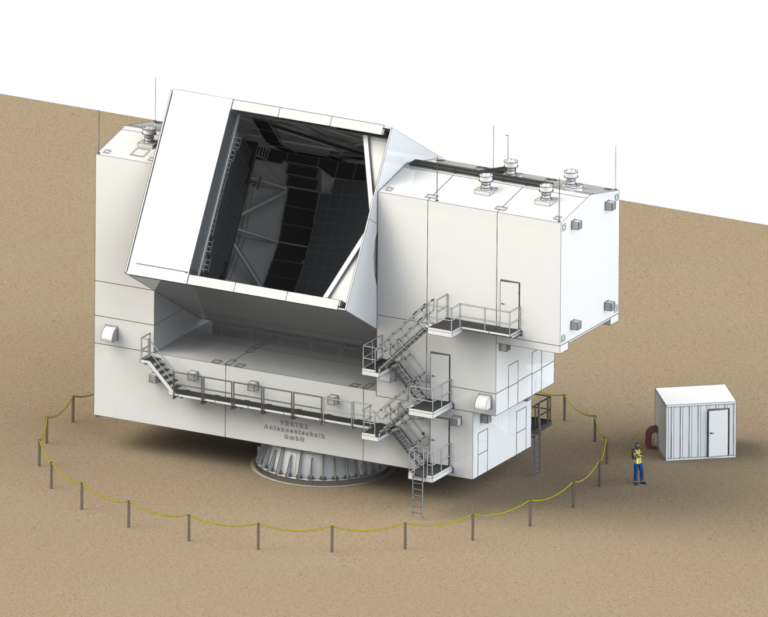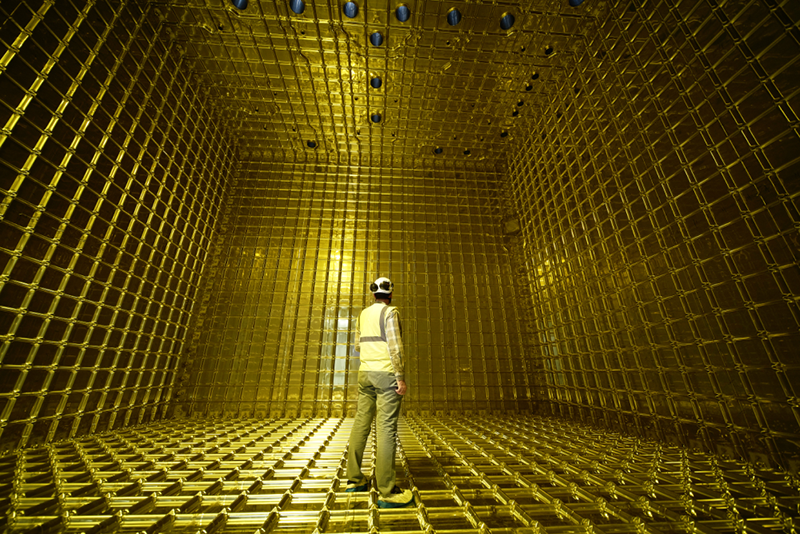US Particle Physicists Make Their Wish List
On Friday, a panel of high-energy physicists unanimously voted to approve a plan for the next decade of particle physics in the United States. The plan prioritizes US funding for ongoing and already-under-construction experiments and outlines a roadmap for possible new initiatives, including a big bang observatory and a muon collider. Response from the community to the report is largely positive. But in discussions immediately prior to the vote, high-energy scientists raised questions about the ranking and selection of future projects.
Once a decade, the Particle Physics Project Prioritization Panel (P5) convenes to strategize on where to focus efforts—and money—over the next ten years. The resulting P5 report acts as a roadmap for scientists and for the two main US agencies that fund high-energy physics, the Department of Energy (DOE) and the National Science Foundation (NSF).
The priorities of this iteration of the P5 report were selected from suggestions and proposals presented by the broader research community at townhalls and conferences that took place over the past year (see, for example, Research News: A “Retro” Collider Design for a Higgs Factory). “The report is the culmination of a very long process,” said Sally Seidel, a physicist at the University of New Mexico and the interim chairperson of the US federal government’s advisory panel for high-energy physics.
The P5 committee’s first funding recommendation is to support ongoing experiments and complete current construction projects, which include the first phase of the Deep Underground Neutrino Experiment (DUNE) in the US, the high-luminosity upgrade of the Large Hadron Collider (LHC) at CERN in Switzerland, and the Vera C. Rubin Observatory in Chile. Looking ahead to the next generation of experiments, the committee offers a list of five plans, ranked in priority. Topping that chart is a big bang observatory called the Cosmic Microwave Background-Stage IV (CMB-S4). This facility and its anticipated 12 radio telescopes would probe the earliest moments of the Universe by detecting possible signatures of primordial gravitational waves in the microwave sky. These measurements could offer evidence of an early acceleration phase called cosmic inflation.
The other four future priorities include experiments to study neutrinos, dark matter particles, and Higgs bosons. The report also presents a 20-year plan to build the world’s first muon collider, a 10-TeV collider that, it is envisioned, could unlock the secrets of dark matter. “We don’t know if a muon collider is possible, but working toward it comes with high rewards,” said Hitoshi Murayama a physicist at the University of California, Berkeley, and the chair of the recommendation committee. “We envision a new era of scientific leadership centered on decoding the quantum realm, unveiling the hidden Universe, and exploring novel paradigms.”
The panel’s recommendations act only as a guideline; the DOE and the NSF must approve any new projects before they can go ahead. For facilities located outside of the US, such as those at CERN, other governments and international agencies must also sign on.
When forming their plan, the P5 panel considered two budget scenarios, both of which were supplied by the DOE. The more favorable scenario assumes a small bump in funding levels over the next two years, which would come from the CHIPS and Science Act, followed by an annual increase of 3% to keep pace with inflation. The less favorable outcome has no initial bump and an annual increase of 2%, which in real terms would mean a drop in funding.
In this second scenario, focus would go on maintaining current experiments. Of the hoped-for new facilities, only two would proceed as planned: the CMB-S4 and IceCube-Gen2, which would have a volume ten times bigger than that of the current IceCube neutrino detector at the South Pole. The volume increase would make IceCube-Gen2 sensitive to some dark matter candidates. The other planned projects, including the Higgs facility, would have significantly reduced scopes.
Following the presentation of the P5 report at a meeting in Washington, DC, physicists who attended in person and online engaged in a detailed discussion of the report. Sekhar Chivukula, a physicist at the University of California, San Diego, and the 2023 chair of the APS Division of Particles and Fields, opened the discussion saying that “the report reflects an accurate reading of what the community asked for.” While many agreed with that sentiment, others felt that the panel had missed a key recommendation—funding the so-called Forward Physics Facility (FPF). This future facility would enable experiments at the LHC to image neutrinos and would complement other planned neutrino observatories.
Jonathan Feng, a theoretical particle physicist at the University of California, Irvine, questioned the panel on their decision to leave funding for FPF out of the plan. Construction of this facility was one of the immediate priorities from the Snowmass energy frontier group, a community group that made recommendations for how to explore particles at the TeV scale and beyond. “This priority was from the entire community, not just a handful of people,” says Milind Diwan, a physicist at Brookhaven National Laboratory in New York and a former P5 panel member from two decades ago. At a townhall yesterday at Fermi National Accelerator Laboratory in Illinois, Diwan requested that the current P5 panel change their decision on FPF from a “no” to at least a “maybe.”
Feng and Diwan both noted that discussions have already begun about making this facility at CERN, and they are concerned that the “no” from the P5 committee will end those talks. “Saying no in the way they have, gives a clear signal to other funding agencies that the project lacks our support and that puts other funding in jeopardy,” Diwan says. “That goes against the principles of being a good international partner.”
“We would have loved to support all the projects that were proposed,” Murayama said in response to these concerns. Murayama acknowledged that the project had strong backing, but said that the panel felt that the required commitment to building new infrastructure and to agreeing to all the facility’s scientific components meant that it could not endorse the proposal. Murayama noted that currently there is no information from CERN about what size such a facility might be and exactly what science might go on there. “We were not given a blue-sky budget,” he said.
Another hard choice was the decision not to fund a US-based Higgs factory—an electron–positron collider that would produce large numbers of Higgs bosons for study. Instead, the panel recommended that the US collaborate with international partners to determine the feasibility of an “offshore” Higgs factory in Asia or Europe. A future panel would then have to review the plans before committing further US participation. In a “less favorable” budget scenario, any participation would be delayed and any financial contributions reduced.
In the report discussion, Andrew White, a physicist at the University of Texas at Arlington, voiced concerns that reduced investment in a Higgs factory would reflect poorly on US science. “Obviously, that would impact US leadership in such a project,” he said. Murayama acknowledged that possibility but said with full funding the plans should ensure the opposite. “We need to be a strong partner in the project,” he said. “We should not be sitting around. We should be actively engaged in feasibility and design studies [of a Higgs factory].”
Throughout the presentation of the P5 report, members of the P5 panel noted that the community presented them with many other “inspiring and ambitious” projects. But if they had accepted all proposals, the budget would have been blown up. Over the next decade, the community will likely see less than $20 billion combined from the DOE and NSF.
While the panel realizes that proponents of nonselected projects may feel bereft, Karsten Heeger, a physicist at Yale University and the deputy chair of the P5 committee, said that “we wanted to make sure that what we recommended fit within a few percent of the budget scenarios.” Meeting that constraint involved some hard choices, including turning down close to two thirds of community proposals. “Everything was on the table, including ongoing projects,” Heeger said. In the end, the committee chose experiments that they saw as having the potential for transformational discovery. “We are not mortgaging the future,” Heeger said.
–Katherine Wright
Katherine Wright is the Deputy Editor of Physics Magazine.







